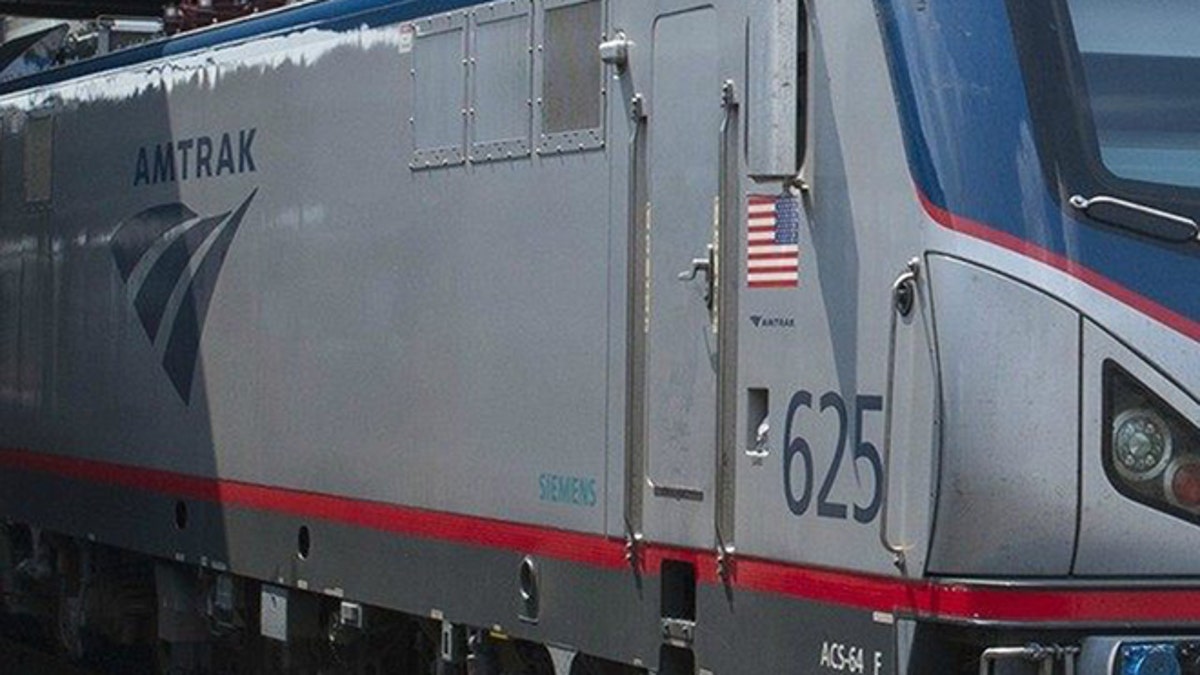
An Amtrak locomotive is shown. (AP)
At a time when America’s crumbling roads and bridges are a serious national problem, U.S. rail infrastructure and rail freight service are the envy of the world. The reason for the difference is simple. A little more than 30 years ago, Congress decided to leave railroads alone.
When Congress passed the Staggers Act in 1980 the U.S. rail industry was in decline, steadily losing business to other modes of freight transportation. Lifting the onerous government price and regulatory controls that had kept rail carriers down changed everything. The Department of Transportation reported that railroad industry costs and prices were cut in half in the decade following deregulation. Railroad companies went from near insolvency to prosperity, and the U.S. economy benefited from their recovery.
We continue to benefit from it today. The privately built and maintained U.S. rail system produced an estimated economic impact of $274 billion in 2014. It generated $11 billion in state and local tax revenues, and supported 1.3 million American jobs in a wide variety of industries. Direct railroad employees (more than 160,000 of them) took home wages and benefits totaling roughly $19 billion.
A healthy rail system spurs growth in all economic sectors. It is frightening to think what the U.S. trade imbalance would be without railroads. In addition to moving 40 percent of domestic intercity freight volume, trains carry one-third of all American export goods as well.
The economic miracle of America’s deregulated railroads is an object lesson we cannot afford to ignore. People who want more government involvement in everything from our health care to the financial system are missing the point.
Railroads, the most fuel-efficient way to transport freight, are easy on the environment as well. Moving freight by rail instead of trucks cuts greenhouse gas emissions by 75 percent. One train can carry the same load as several hundred trucks, not only reducing fuel consumption and emissions but also alleviating gridlock and taking pressure off highways.
That’s especially important now, with U.S. highways in such sad shape. Publicly funded roads and bridges need massive repairs and upgrades. Hardly a week goes by without some new scheme being unveiled to put taxpayers on the hook for the estimated $740 billion backlog of work that needs to be done to U.S. highway infrastructure. Contrast that with our rail system, which attracted some $600 billion in private investment from 1980 through 2014, $29 billion last year alone. No infrastructure crisis here, thanks to deregulation and private ownership.
The economic miracle of America’s deregulated railroads is an object lesson we cannot afford to ignore. People who want more government involvement in everything from our health care to the financial system are missing the point. Railroads were failing under government control. When that control was lifted they flourished, creating jobs, making the U.S. more competitive in global markets, and improving the natural environment as a result.
America’s railroads, the best in the world, are living proof that less is more when it comes to government. Government intervention came close to destroying the rail system; deregulation saved it. Putting that revelation to work in other facets of our economy and daily lives should be the top priority of the new administration.




















